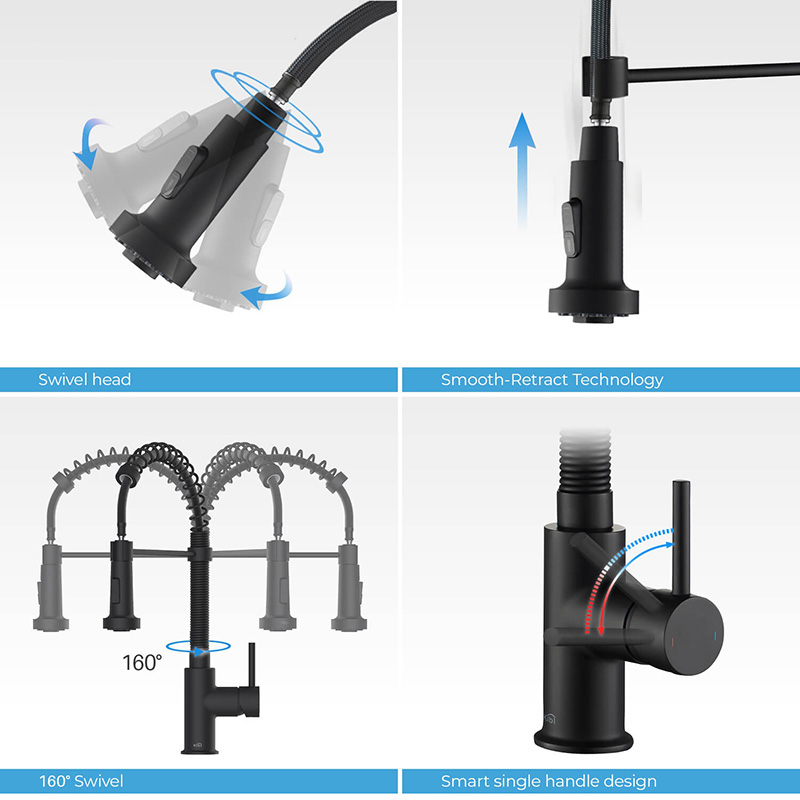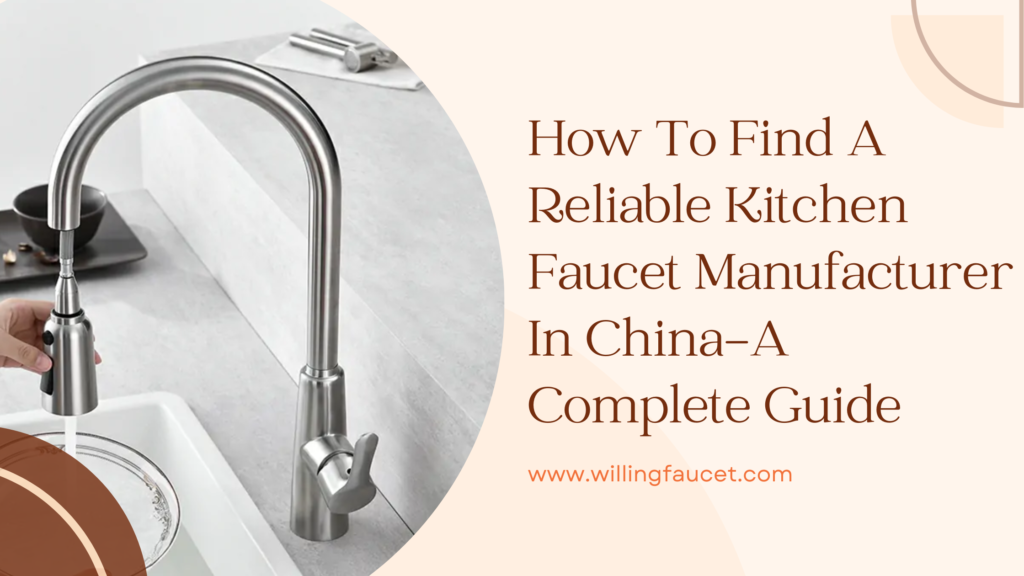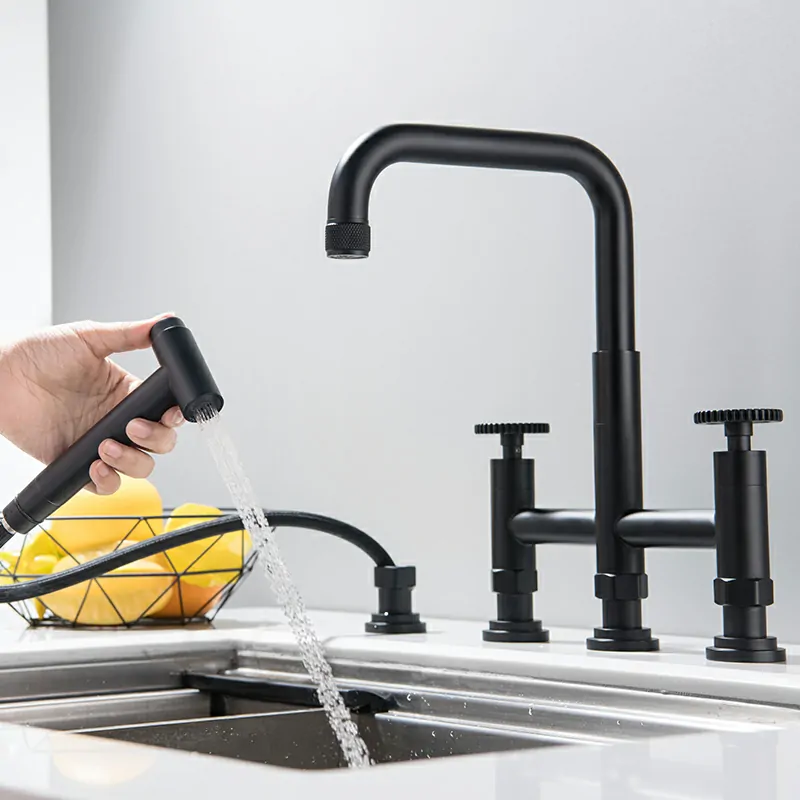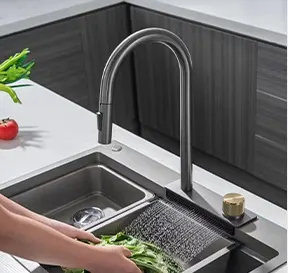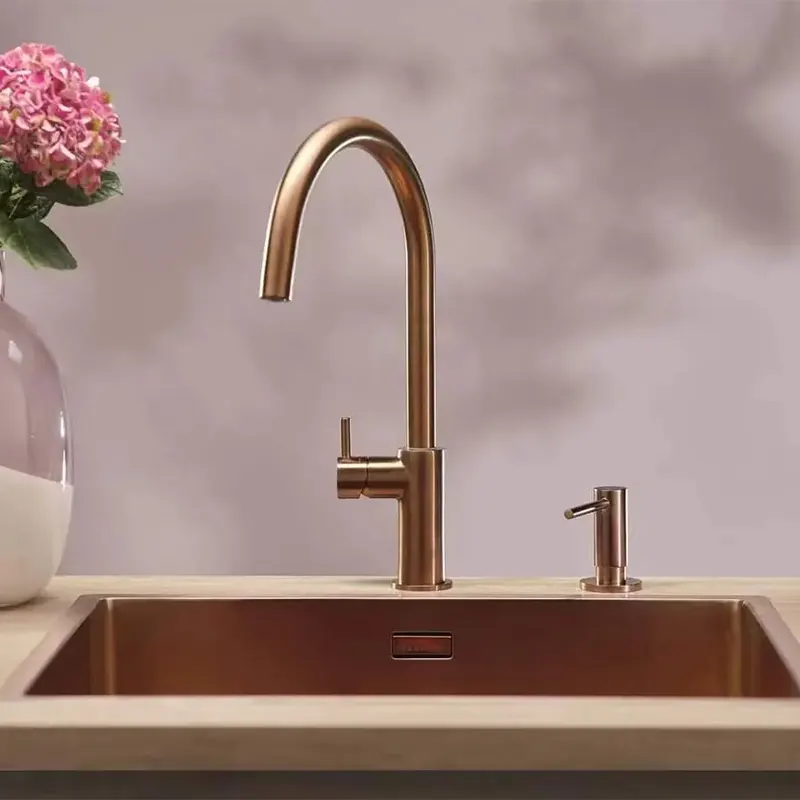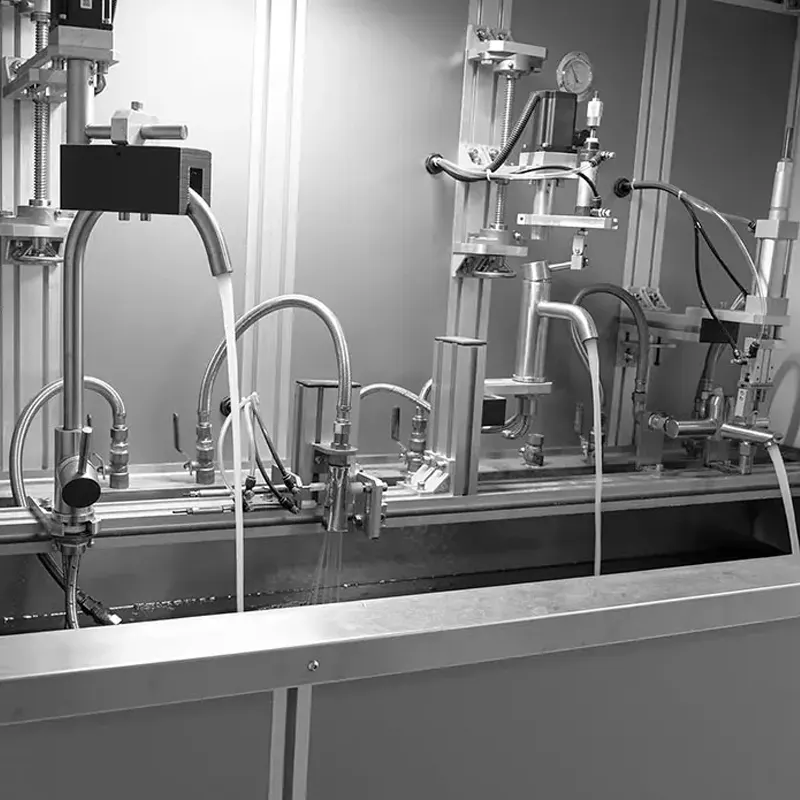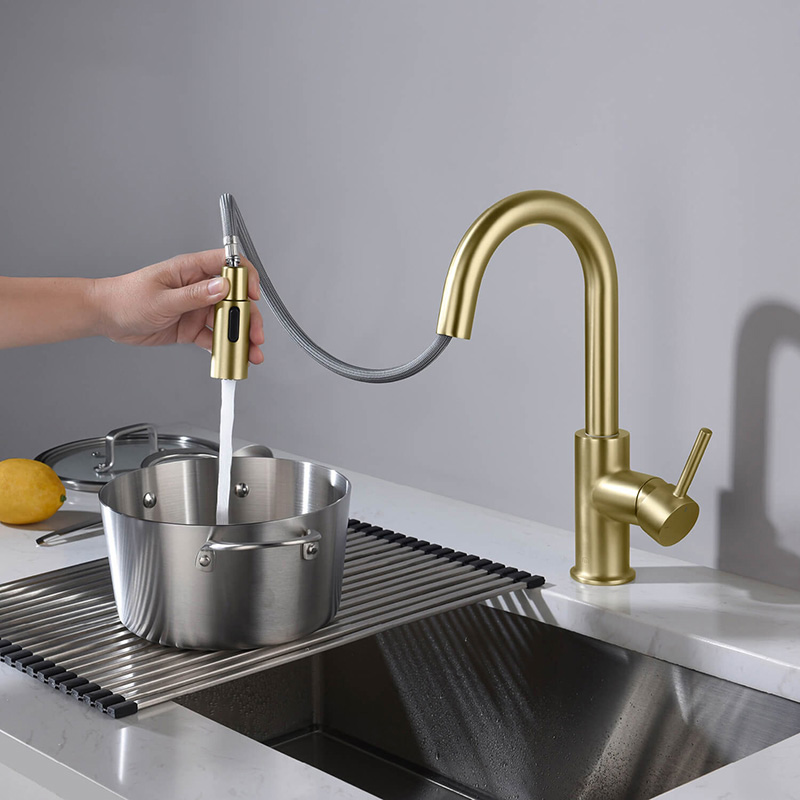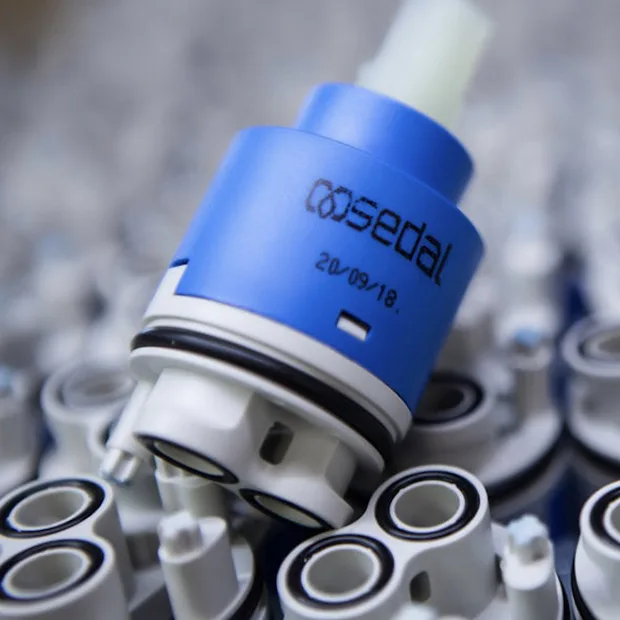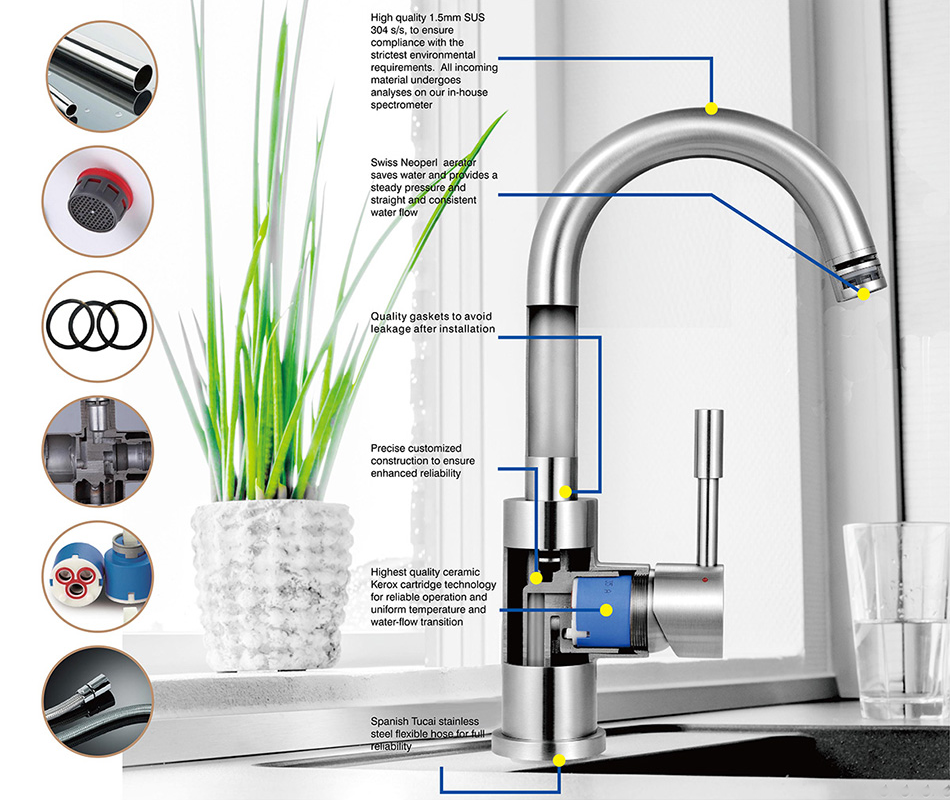How To Make A Faucet: The Complete Faucets Manufacturing Process
No Matter whether you are a user or seller, or buyer, I think you must be interested How To Make A Faucet, In this article, we will provide a comprehensive overview of the complete manufacturing process of a faucet,
Making a kitchen faucet involves multiple steps, including design, material preparation, processing, assembly, quality control, and packaging. A designer creates the faucet’s shape, size, and features based on usage requirements and uses CAD software to make a design drawing. The factory prepares materials such as stainless steel, copper, plastic, and rubber and processes them into components. Assembly workers use fasteners, rubber gaskets, and other components to piece together a complete kitchen faucet. Quality control personnel test the faucet’s quality, including pressure testing, leak testing, and flow testing, and package it for shipment to sales points. Although different manufacturing factories may have some differences in some of these steps
We would like to let you meet our Factory and start and explore the intricacies of making a faucet. then you will find we are a professional kitchen faucet manufacturer in China.
There are several materials for kitchen faucets, For example, Brass materials, Zinc Materials, and Stainless steel materials. In this article, we introduce How Stainless steel kitchen faucets manufactured
What are faucets
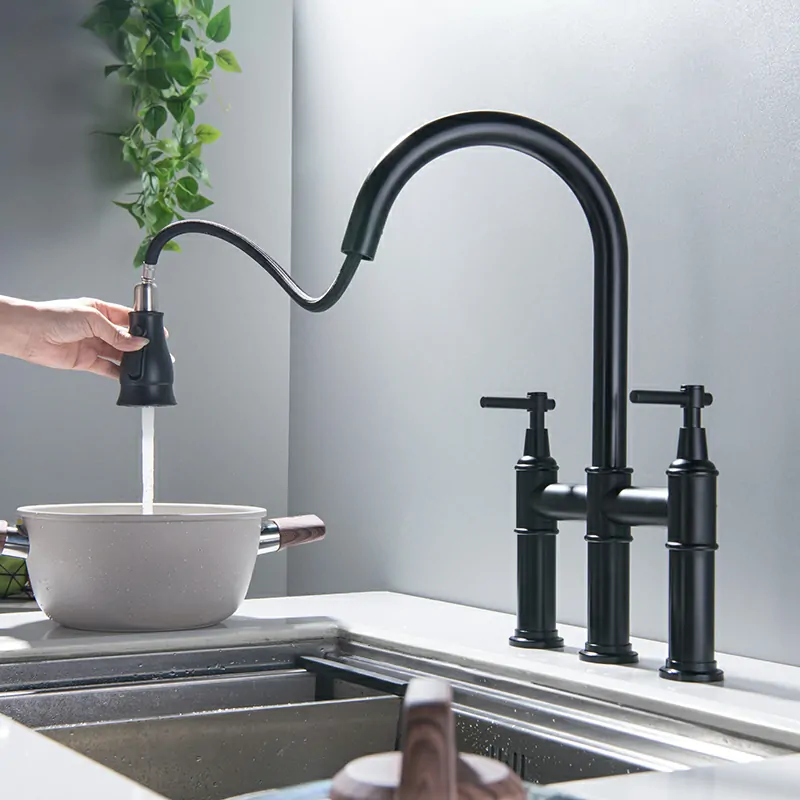
Faucets are plumbing fixtures used to control the flow and temperature of water in residential, commercial, and industrial settings.
They are typically made of metal and consist of various components, such as handles, spouts, cartridges, and aerators. The design of a faucet can vary widely, from simple and utilitarian to ornate and decorative. Faucets come in various types, including kitchen faucets, bathroom sink faucets, shower faucets, and bathtub faucets.
They can also be categorized based on the type of installation, such as wall-mounted faucets, deck-mounted faucets, or floor-mounted faucets. The primary function of a faucet is to control the water flow and temperature. A cartridge within the faucet controls the water flow, while the handles or knobs control the temperature. Aerators are often included to reduce water usage and improve water pressure.
Step 1- Faucets Design
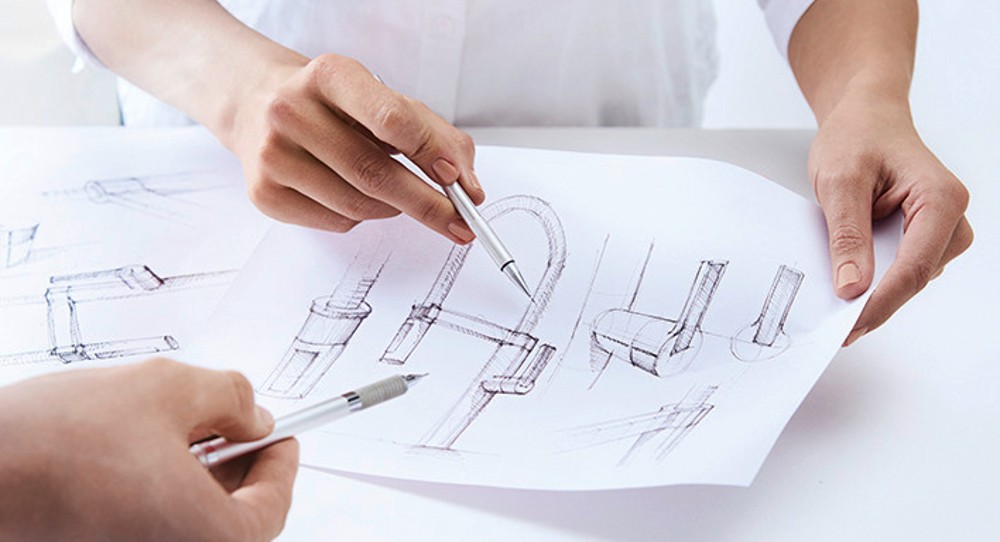
- When designing a new faucet, we always make a research analysis first, and talk with our Customers and get more ideas. Generally there are several factors should be considered, including:
- Style and Aesthetics: The faucet should complement the overall design aesthetic of the kitchen, with finishes and styles that appeal to consumers. It should also be versatile enough to accommodate a range of kitchen styles and décor.
- Functionality: The faucet should be designed to perform its primary function of dispensing water in a reliable and efficient manner. This includes considerations such as the flow rate, water pressure, and temperature control.
- User Experience: The faucet should be easy and comfortable to use, with intuitive controls and ergonomic design. It should also consider the needs of users, such as the height and reach of the spout, handles, and sprayer.
- Durability: The faucet should be constructed from durable materials that can withstand daily use and exposure to water, heat, and chemicals. It should also be resistant to corrosion and wear.
- Technology Integration: Incorporating innovative technology, such as touchless activation or water-saving features, can enhance the functionality and user experience of the faucet.
- Compliance with Regulations: The faucet should comply with industry regulations, such as lead-free requirements, and meet industry standards for performance and safety
Step 2- Print 3D Model Samples For Customer Confirmation
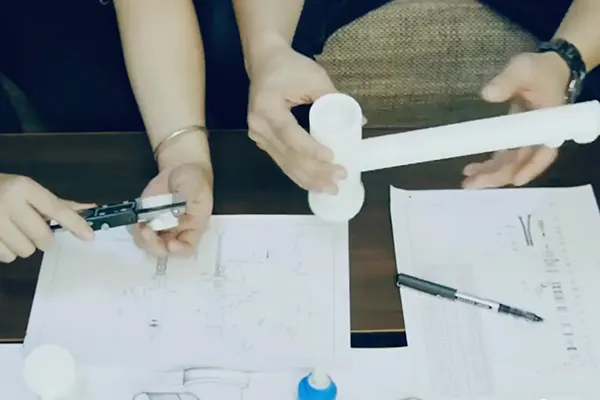
After getting the customer’s approval of the design appearance, we will proceed with creating a 3D sample for the customer to confirm the design once again. This step is crucial to ensure that the final product meets the customer’s expectations and specifications.
The 3D sample provides a realistic representation of the product’s design and allows the customer to visualize how the final product will look and function. It also provides an opportunity for the customer to make any final adjustments or modifications before moving forward with the production process.
Our team will work closely with the customer to ensure that the 3D sample accurately reflects the design specifications and meets all necessary requirements. Once the customer has confirmed the design, we can move forward with the manufacturing process with the assurance that the final product will meet their needs and expectations.
At every stage of the design and manufacturing process, our goal is to provide exceptional customer service and ensure that our products meet the highest standards of quality and craftsmanship.
Step 3- Create Real Samples For Customer’s Final Confirmation
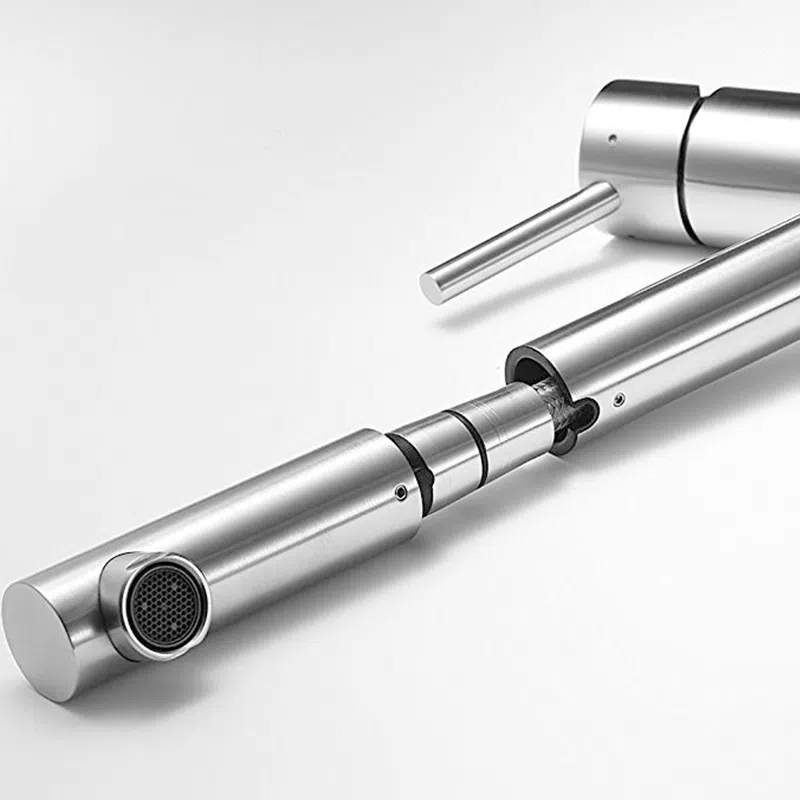
Once Get the New Kitchen faucet design of the 3D sample has been approved by the Customer, the Engineer will move forward with the production of real samples for the customer to inspect and confirm. These real samples will provide a tangible representation of the design and allow for any necessary adjustments to be made before mass production begins. Our team will carefully inspect and test each sample to ensure that it meets the necessary standards of quality and functionality. We understand the importance of delivering a product that not only meets but exceeds the expectations of our customers, and the production of real samples is a vital step in achieving this goal.
Step 4- Selecting High-quality Raw Materials
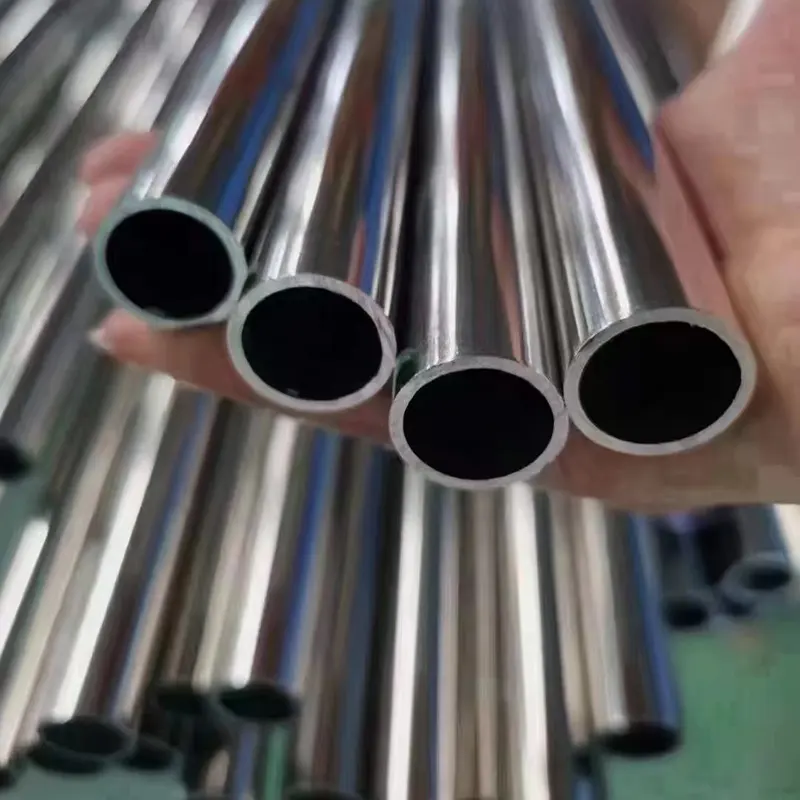
After the approval of the final sample, mass production of the kitchen faucets can begin. It is important to emphasize that raw materials play a crucial role in the production process. For our kitchen faucets, we use 304 lead-free stainless steel, which not only meets but exceeds the necessary health and safety standards for kitchen use. By using high-quality raw materials, we can ensure that the final product is durable, safe, and functional. Our team carefully selects and inspects each batch of raw materials to guarantee that they meet our high standards and that the final product is of the utmost quality. We are committed to providing our customers with the best possible product, and the use of superior raw materials is just one way we achieve this goal. The Raw materials are very important once we go into mass production for kitchen faucets.
Step 5- Raw material cutting and Casting
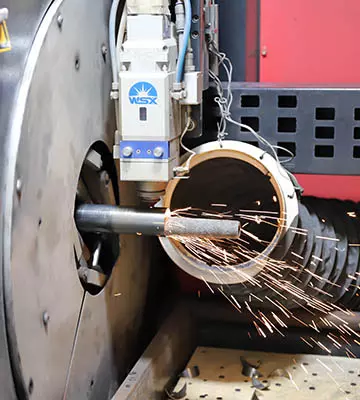
After the preparation of raw materials, the production of kitchen faucets follows a set of carefully planned steps to ensure high-quality products. The first step is to cut and cast the raw materials according to the production process requirements. This involves using specialized equipment to cut and shape the stainless steel into the desired size and shape.
Casting is another crucial step in the production process, which involves pouring molten stainless steel into a mold to create the desired shape of the faucet. This step requires precision and attention to detail to ensure that the final product meets the necessary specifications.
Our team is highly skilled and experienced in these processes, and we use advanced technology and equipment to ensure the highest level of accuracy and efficiency. By following these steps carefully, we can guarantee that each kitchen faucet we produce meets our high standards for quality and functionality.
Step 6- Wire Machine Cutting
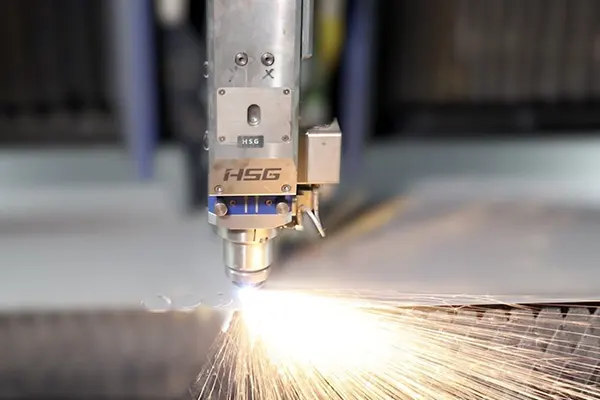
There are certain components of the kitchen faucet that require more precise cutting, which is achieved through the use of a wire machine cutting process. This process involves using a high-powered laser to cut through the raw materials with incredible accuracy, ensuring that the components are cut to the exact specifications required for assembly.
By using this technology, we can create precise cuts in various materials, such as stainless steel or brass, that would be difficult to achieve using traditional cutting methods. This precision is essential to ensure that each component fits perfectly and functions correctly once assembled.
Our team of skilled technicians carefully oversees the wire machine-cutting process to ensure that each component meets our strict standards for quality and precision. This attention to detail and commitment to excellence is just one way that we ensure the final product meets and exceeds our customers’ expectations.
Step 7- CNC machining
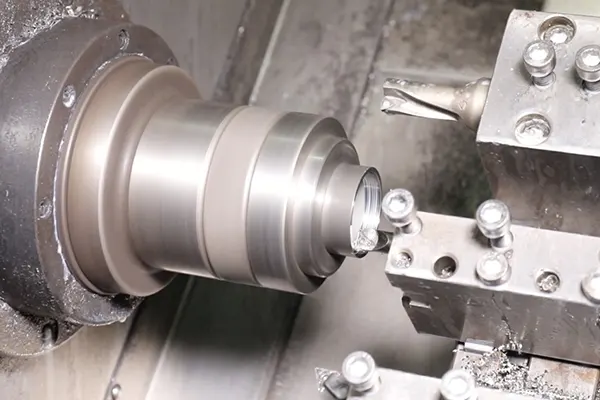
CNC machining is a crucial step in the production of kitchen faucets. During the manufacturing process, the faucet components are precisely shaped and drilled using computerized controls and automation.
The CNC machine uses a computer program to control the movement of the cutting tools, ensuring that the faucet components are accurately shaped and drilled to meet specific design requirements. The use of CNC machining allows for highly precise and consistent production of parts, ensuring that each faucet is of the highest quality.
In the production of kitchen faucets, CNC machining is used to shape and drill various components such as the spout, handles, and valves. The machine is programmed to make precise cuts and drill holes to ensure that each component fits perfectly with the others.
The benefits of using CNC machining in the production of kitchen faucets include improved precision, consistency, and efficiency. With CNC machining, manufacturers can produce high-quality, durable faucets that meet the needs of consumers.
Step 8- Kitchen Faucets Spout Pipes bending
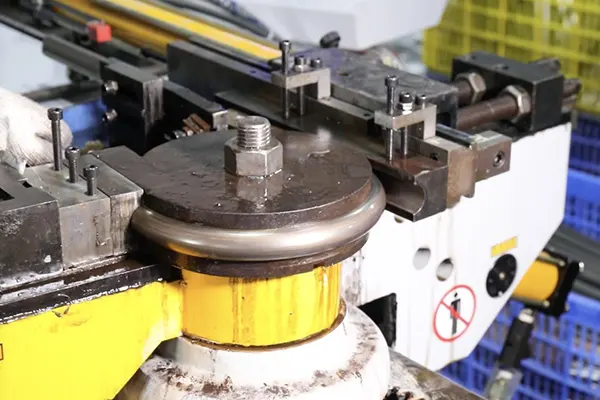
Tube bending: The tubes are then fed through a tube bending machine, which bends the tubes at the correct angles and radius according to the design specifications. The machine applies pressure to the tube, bending it around a die to create the desired shape. After the tube has been bent, it may need to be annealed to prevent cracking or weakening of the metal.
Inspection: The bent tubes are then inspected for quality and consistency. Any tubes that do not meet the required specifications are rejected and sent back for rework.
Laser welding: Once the tubes are bent to the correct shape, the various parts of the spout are laser-welded together. The high-precision laser welding technique melts the metal at the joint, fusing the pieces together without the need for additional material such as solder.
Step 9- Laser welding
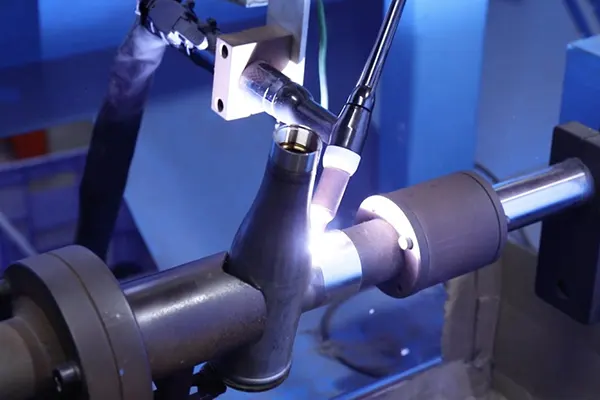
we use laser welding to join the main body and spout of our faucets. Laser welding is a highly precise and efficient method of joining two metal components, such as the body and spout of a faucet.
This process involves using a laser beam to melt and fuse the metal surfaces of the two components together. The laser is able to generate high temperatures in a small area, which creates a strong bond between the two pieces without causing damage to the surrounding material.
The resulting weld is clean, strong, and highly resistant to corrosion, making it ideal for use in kitchen faucets that are exposed to water and moisture on a daily basis. Additionally, laser welding is a cost-effective and environmentally-friendly method of production, as it generates minimal waste and consumes less energy than traditional welding methods.
The laser welding in the production of our kitchen faucets ensures a high-quality, durable product that is both efficient and environmentally friendly.
Step 10- Argon Arc Welding (TIG)
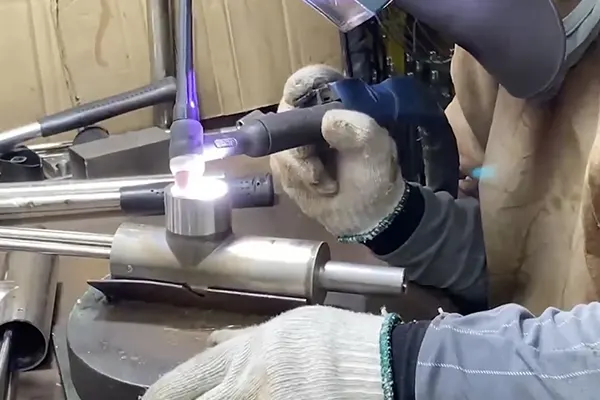
In addition to laser welding, we also utilize Argon Arc Welding (TIG) in the production of our kitchen faucets. TIG welding is a process that uses a non-consumable tungsten electrode to produce the weld, which is protected by an inert gas, such as argon.
This process produces a very precise and high-quality weld that is suitable for joining the intricate components of our faucets. The TIG welding process allows us to join a wide range of metals, including stainless steel and brass, without the risk of contamination or damage to the surrounding material.
TIG welding also provides a high level of control over the heat input, which is important for maintaining the integrity of the materials being joined. This helps to prevent warping, distortion, or other defects that can compromise the functionality or appearance of the finished product.
The use of TIG welding in our production process allows us to create kitchen faucets that are not only aesthetically pleasing, but also durable and reliable. By utilizing a combination of TIG and laser welding, we are able to achieve a high level of precision and efficiency in our manufacturing processes, ensuring that our products meet the highest standards of quality and performance.
Step 11- Surface polishing
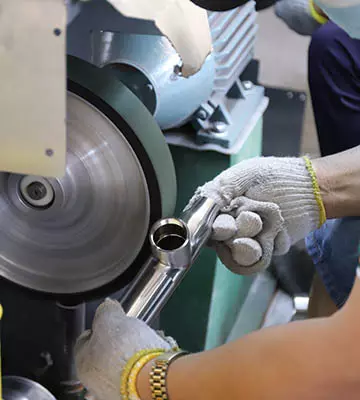
After welding is complete, we perform surface polishing and finishing on our kitchen faucets. This process involves using a variety of tools and techniques to smooth and refine the surface of the metal, removing any imperfections or rough edges that may have been created during the welding process.
The polishing process typically begins with coarse abrasives, such as sandpaper or grinding wheels, which are used to remove any large or visible blemishes. From there, finer abrasives are used to gradually smooth and refine the surface of the metal, resulting in a smooth and even finish.
In some cases, we may also use chemical polishing agents or electroplating processes to achieve a desired finish or to protect the surface of the metal from corrosion or wear.
Overall, the surface polishing and finishing process is an important step in the production of high-quality kitchen faucets. By carefully refining and smoothing the surface of the metal, we are able to create a product that not only looks great but is also durable and long-lasting
Step 12- Faucets Colors PVD
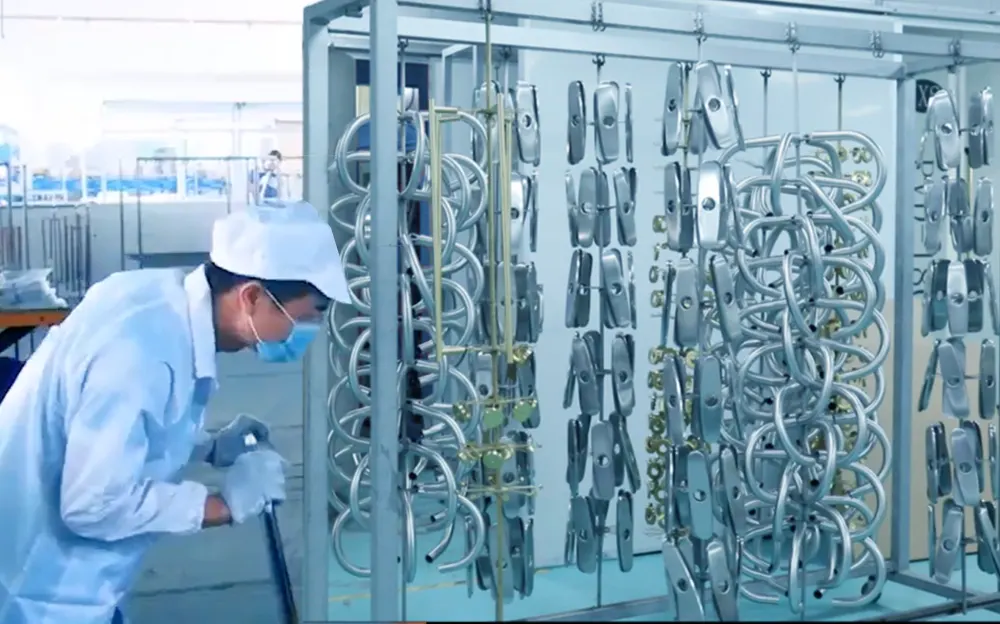
After the polishing process, we also offer the option of customizing the color of our kitchen faucets for customers who prefer a different finish. We use a process called PVD (Physical Vapor Deposition) to achieve a variety of different colors and finishes.
PVD is a highly durable and aesthetically pleasing coating process that involves vaporizing a metal or metal alloy in a vacuum chamber and depositing it onto the surface of the faucet using a high-energy ion bombardment process. This results in a thin film coating that is highly resistant to wear, corrosion, and fading.
With PVD, we can offer a wide range of colors and finishes, from classic stainless steel to more bold and vibrant options like gold, black, or rose gold. This allows us to provide our customers with a truly personalized product that reflects their unique style and tastes.
The use of PVD technology in our production process enables us to create kitchen faucets that are not only functional and durable but also visually appealing and customizable.
Step 13- Assembly and installation
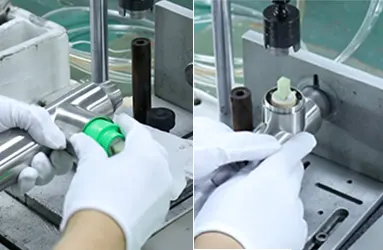
Once all components have been inspected and verified to meet our high standards of quality, we proceed with the assembly and installation of our kitchen faucets.
The assembly process typically involves attaching the various components of the faucet, such as the spout, handles, and aerator, using specialized tools and techniques. Our experienced technicians take great care to ensure that each component is properly aligned and securely fastened, to prevent leaks or other issues that could compromise the performance of the faucet.
Once the faucet is fully assembled, it undergoes a final quality control check to ensure that it is functioning properly and meets all of our rigorous standards for quality and performance.
Once the faucet has passed our quality control checks, it is ready for installation in the customer’s kitchen. We provide detailed installation instructions and support to ensure that our customers are able to easily and successfully install their new kitchen faucet, and we are always available to answer any questions or provide additional assistance as needed.
The assembly and installation process is a critical step in our production process, as it ensures that our customers receive a high-quality and reliable product that meets their needs and exceeds their expectations.
Step 14- WaterTesting and inspection
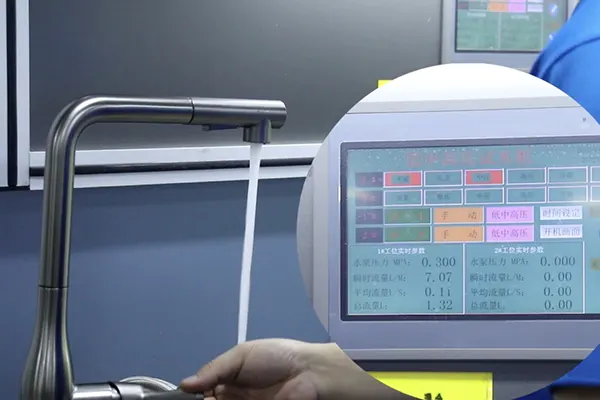
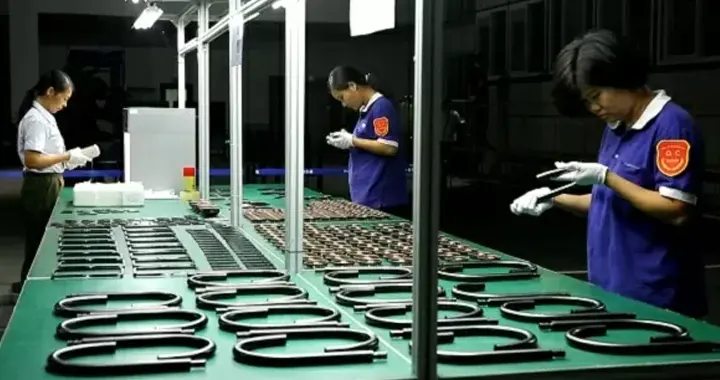
We conduct water and air testing during the production process to ensure that our products are free from any leaks or defects. there is no any leakage issues from our customers.
Water testing involves connecting the faucet to a water supply and turning on the water to check for any leaks or drips. This process is typically done using a specialized testing rig that simulates normal usage conditions.
Air testing involves pressurizing the faucet with compressed air to check for any air leaks or defects. This process is also typically done using a specialized testing rig that can accurately measure any air leaks.
Both water and air testing are critical steps in ensuring the quality of our products and preventing any potential issues for our customers. We take these steps seriously and make sure that every faucet leaving our factory has undergone rigorous testing and inspection.
Step 15- Packaging and protection
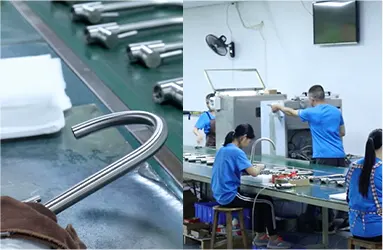
After installing and testing the faucet, the next step is to package and protect it to ensure it arrives at the customer’s location in excellent condition.
Packaging for kitchen faucets typically includes a combination of a cardboard box and foam inserts to protect the faucet from any damage during shipping. The foam inserts are designed to fit the specific shape of the faucet and keep it securely in place, while the cardboard box provides an additional layer of protection.
In addition to packaging, we also take steps to protect the faucet’s finish from any scratches or other damage during shipping. This may include applying a protective film or cover to the faucet’s surface, which can be easily removed by the customer after installation.
Our goal is to make sure that every faucet arrives at the customer’s location in pristine condition, ready for easy installation and years of reliable use.
Step 16- Shipping On Time
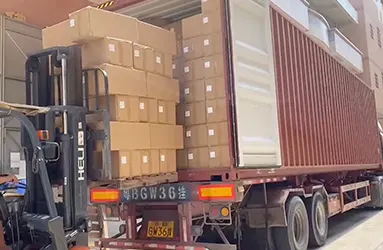
To ensure timely delivery, we closely monitor the shipping process and provide our customers with tracking information so they can track their package and know exactly when to expect delivery. In the rare event of any shipping delays or issues, we work with our shipping partners to quickly resolve the problem and ensure that the faucet arrives at its destination as soon as possible.
At every step of the process, from production to packaging to shipping, we take great care to ensure the highest level of quality and reliability for our customers.

